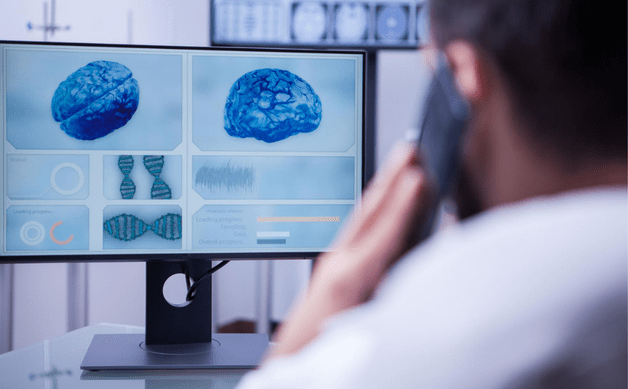Virtual monitoring for healthcare: Moving towards safe and smart hospitals
82% of hospitals are struggling to maintain security over the last few years. (Source) Hospitals and nursing homes encounter several hurdles to ensure the safety of hospital property and patients, staff, and visitors. It is high time; they become smart and up on their toes to fight emergencies of all kinds. This requires effective surveillance and a scalable storage platform. In advanced hospitals or nursing homes, virtual monitoring is an essential tool not only for safeguarding the hospital but also for increasing employees’ productivity and controlling costs.
By leveraging virtual monitoring solutions, hospitals protect patients, doctors, nurses, staff, and visitors from security breaches and man-made disasters. Today, modern hospitals are using a virtual monitoring system equipped with an HD CCTV camera to record important visual evidence to prevent false insurance claims. Virtual monitoring offers added flexibility to hospitals with remote video monitoring and powerful cloud storage capacities.
Why is virtual monitoring essential to patient care?
Hospitals need to be on their toes all the time. If they fail to ensure the safety and quality of patient care, it can lead to lawsuits for negligence and ruin your public image. To address these hurdles, hospitals, and nursing homes are rapidly adopting virtual monitoring solutions. It is making sense for hospital management as it ensures a safe hospital environment, efficient resource allocation, and quality patient care. Thus, it is ultimately creating more business revenue. Let’s give you the best example of its modus operandi.
Please who are handle healthcare management know that ICUs (Intensive Care Units) have to be within the visual range of nursing staff and the beds are to be visually monitored every minute. However, the physical arrangements of the hospital building or the lack of present nurses don’t allow continuous monitoring to happen always. In most scenarios, due to growing patient counts, the management has extended or evolved ICU rooms away from the nurses’ station. Here, remote visual monitoring through video & audio surveillance solves the issue easily. Now, nurses have a visual of each ICU bed at the same time at the single station or control.
In the field of diagnostic medicine, in a few cases, video surveillance is used to optimize patient care. For instance, specific clinical treatments are performed in multi-step under anesthesia. During this, the patients must be monitored from the beginning to last through different procedures. For some, they lack sufficient nurses to physically monitor throughout the process. Hence, the quality of patient care is being compromised. Surveillance via CCTV cameras placed in the recovery room and remote monitoring has saved a lot of expenses for the hospital. Here, Virtual remote patient monitoring has paved the way for hospitals to give a whole new dimension to patient care.
Healthcare BPO: The role of outsourcing in the Health & Medical Industry
Top 4 benefits of virtual monitoring in hospitals
Virtual monitoring will help you streamline processes better in hospitals and deepen your provider-patient relationship. Learn some of the topmost benefits that you will enjoy on availing of this service below.
Secures expensive drugs, medicines, and types of equipment
Hospital cash counters and storerooms, where expensive drugs and equipment are kept are most prone to thefts. As a hospital, you must have stored rare and expensive medicines such as heparin, noradrenaline, adrenaline, etc., and major surgery equipment. You have to look after them by keeping them in a safe room under surveillance that only authorized persons can access. Virtual monitoring allows you to overcome these challenges by leveraging smart features such as remote monitoring, object tracking, and people counting. It helps hospitals to combat burglars and restrict the access of unauthorized people.
Safety of the patients, staff, and visitors
Running a hospital is a 24-hour business. It is the only place where you find a busy corridor at even 3 AM. In a hospital, a huge number of people come in and out every day. It raises security threats of all kinds. Sometimes, security threats can be terrible. For example, the cases of child abduction from the maternity ward and incubation centers have increased significantly. Here, virtual CCTV monitoring safeguards against such crimes. It provides Crow Management integrated with Access Control solutions to keep a check on the people coming in and out. So, if you think the hospital premises is becoming crowded; you can simply optimize or restrict entry remotely. Thus, it sets an order which is beneficial for the patients, and safe for the staff and visitors.
Eliminate the negligence of doctors, staff, and nurses
Immediate attention to emergency cases is in the absolute interest of any hospital. Some nurses or hospital staff may have a negligent approach toward emergency cases which leads to a slowed response in critical conditions. Sometimes, it may cost lives and ruin hospital reputations, and get them into legal suits. Virtual monitoring through video cameras prevents doctors, nurses, and staff to indulge in indiscipline within the hospital building. Hence, virtual monitoring encourages hospitals to deliver delightful patient experiences and enhances the hospitals’ goodwill.
Maintain hospital hygiene and waste management
Hygiene is an important factor for hospitals as it has a severe impact on patient treatment and safety. With the help of virtual monitoring, the management can keep an eye on the proper cleaning of floors, canteen area, surgical equipment, and as well as on biomedical waste management. As per government guidelines, medical waste must be carefully managed, segregated, and shouldn’t be dumped in random dustbins. Noncompliance can lead to penalization. Therefore, smart hospitals are tapping into a monitoring system that can be accessed and controlled remotely, contributing to the cause pretty much.
Get 24/7 protection for your property with Maxicus e-Surveillance Monitoring.
The setbacks of virtual monitoring
Let us look at some of the most common setbacks a hospital may face concerning virtual monitoring. It is important we understand them one by one before getting virtual monitoring in place.
Privacy issue
Surveillance through CCTV is a useful means for monitoring hospital management and security but before installing, be mindful that patient privacy is not be compromised.
Over-dependence
While monitoring is a crucial component of any hospitals’ security management checklist, the need for sufficient physical security guards will always be applicable.
The fear of downtime
Technology can ditch you sometimes. In the case of tampering or bug in the monitoring system or damaged camera, hospitals must have a backup ready with other means of security management given there are no ‘down-time’ hospitals.
Do not cross the line
The ethical guidelines and practices of CCTV monitoring vary between surveillance in public places versus private spaces. The motive of CCTV surveillance is to strengthen security and safety. Places in hospitals such as a bathroom, changing room, operation theater must be excused from video monitoring. It is mandatory to inform patients or patients’ guardians that the hospital is under CCTV surveillance and take their approval in a signed document. Virtual monitoring certainly increases the patients’ choice regarding surveillance options. Hospital management must follow the respective surveillance guidelines and not invade the private spaces of patients in the name of security compulsion.
Tips to install virtual monitoring system for medical facilities
- Install CCTV strategically, from where the visuals of all hospital entrances and exits can be monitored.
- Put surveillance cameras in hospital hallways and corridors to keep an eye on the movement of the doctors, nurses, and staff.
- Place CCTV in elevators and fire escapes.
- Leverage virtual monitoring tools to patrol the hospital’s loading areas and parking lot.
- Place video surveillance cameras at the doors of restricted sections such as ICUs and operation theaters to ensure that only authorized persons can get in.
- Put video surveillance in the nurse station, reception, canteen, and staff room.










